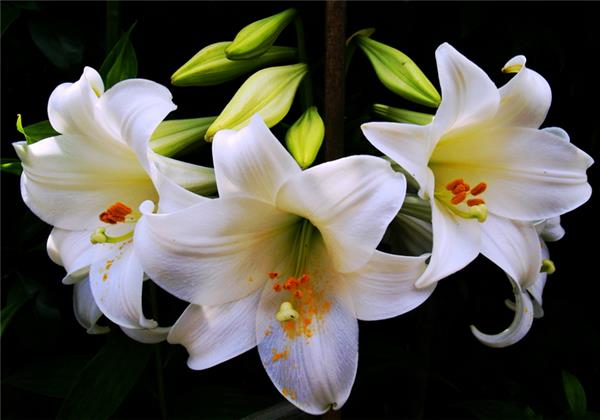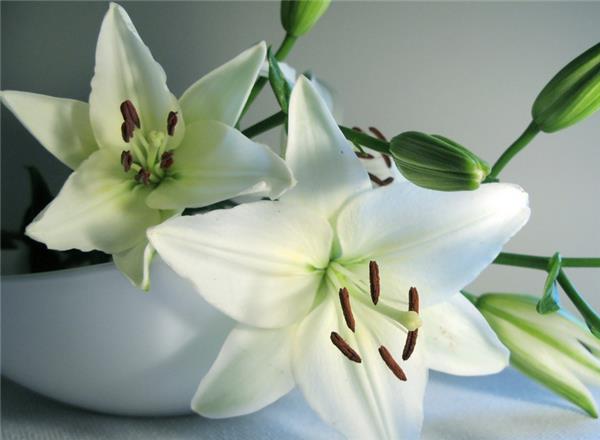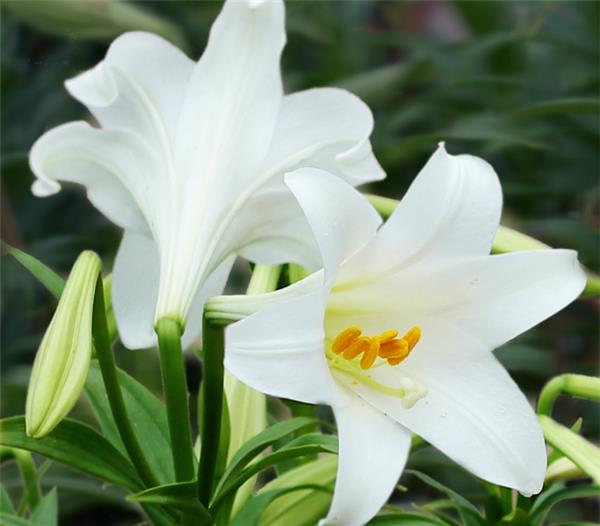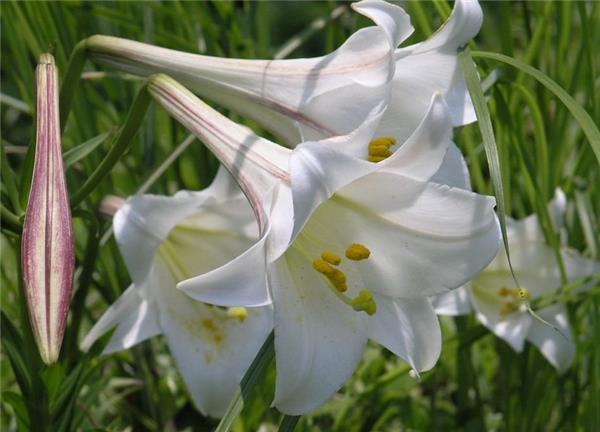Causes of yellowing of lily leaves and its solutions
The lilies are not only beautiful but also fragrant, and they are very popular with people. What if we encounter the leaves of lilies yellowing in the process of breeding? Let's take a look at the causes and solutions of the yellowing of lily leaves.

Causes of yellowing of lily leaves and its solutions
First, the water is yellow. Too much watering can easily cause long-term water in the basin soil, suffocating and rotting the roots, resulting in yellow leaves and even falling off; it is characterized by no obvious change in the old leaves and yellowing of the young leaves. Because the soil is too wet, the yellow leaves should stop watering, loosen the soil and let it ventilate and dry.
Second, dry and yellow. Due to lack of water and drought, it is characterized by the yellow of the old leaves from the bottom to the top. If the lack of water is a little longer, the whole plant will be yellow, or even die. It should be watered at the right time and adhere to the principle of "dry and wet, watering thoroughly".
Third, fat yellow. Caused by excessive fertilization or high concentration; characterized by thick, glossy, and uneven young leaves. Fertilizer, ploughing and watering should be controlled, and thin fertilizer should be applied once a week in summer. If you have applied too much fertilizer, you can pour more water to dilute and flush the fertilizer out of the soil.
Fourth, hungry yellow. During the growing period of potted lilies, long-term non-fertilization or insufficient fertilization will cause the phenomenon of leaf yellow. It is characterized by young leaves and tender stems first yellow. Lack of fertilizer also leads to the hardening of basin soil and the slender, yellow and tender branches. Fertilizer should be applied immediately and it will be effective within a week.

Fifth, partial fertilizer yellow leaves: lilies need more nitrogen and potassium fertilizer, and should be applied every 10-15 days during the growing period, while the supply of phosphate fertilizer should be limited, because too much phosphate fertilizer will cause the leaves to wither and yellow.
Sixth, iron deficiency yellow leaves. Lily is sensitive to soil lily salt, and the soil pH value is 5.5-6.5. The physiological diseases of iron deficiency and yellowing occurred in the alkaline conference. PH test paper can be used to monitor the value of fertilizer and acid. Western drugstores and medical equipment can be sold (2 yuan a copy, which can be used for a long time).
7. Leaf yellow during potting period: leaf yellow occurs most easily due to root injury and maladaptation to the new environment (basin soil, water quality, environmental humidity and temperature). At this time, leaf yellow should be protected, fertilized and watered dry and thoroughly, and the leaf surface should be sprayed with water. wait for the new leaves to grow and then maintain normally.
8. Diseases and insect pests: diseases and insect pests can also cause leaf yellowing. Get rid of diseases and insect pests in time.

Finally, let's take a look at the breeding methods of lilies.
Potted plants should be carried out in September and October. The cultivated soil should be mixed with rotten leaf soil, sandy soil and garden soil at the proportion of 1:1:1. Apply fully mature compost and a small amount of bone powder and plant ash as base fertilizer at the bottom of the basin. The planting depth is generally 2-3 times the diameter of the bulb.
Potted lilies should be changed once a year and replaced with new culture soil and base fertilizer. In addition, the growing period also turns the flowerpot once a week, otherwise the plant is easy to be too long, affecting the beauty.
Fertilization: lilies do not have high requirements for fertilizer, usually at the beginning of spring growth and early flowering. Some foreign growers believe that lilies have the greatest demand for nitrogen and potash fertilizer, which should be applied every 10-15 days during the growing period, while the supply of phosphate fertilizer should be limited, because too much phosphate fertilizer will cause withered leaves and apply 1-2 times more phosphorus and potash fertilizer during flowering. In order to enrich the bulb, the residual flowers should be cut off in time after flowering to reduce nutrient consumption.

Watering: only need to keep the basin soil moist, but in the peak growing season and dry weather, water should be properly watered and often sprinkled around the flowerpot to improve air humidity. The potted soil should not be too wet, otherwise the bulbs will rot easily.
Disease and pest control: (1) lily mosaic disease: also known as lily latent mosaic disease, when the disease occurs, the leaves appear uneven chlorotic spots or withered spots, the injured plants are short, the leaf edges curl, and the leaf shape becomes smaller; sometimes fusiform light brown disease spots appear on the petals, flower deformities, and not easy to open. Control methods: ① selected virus-free bulbs to remain seeds; ② strengthened the control of aphids and leafhoppers; ③ found diseased plants were pulled out and destroyed in time.
(2) spot disease: at the beginning, there are small faded spots on the leaves, brown spots after expansion, and dark brown edges. In the future, there will be many small black spots in the center of the disease spot, and when it is serious, the whole leaf will blacken and die. Control method: remove the diseased leaves and spray once with 65% zinc wettable powder 500 times dilution to prevent spread.
Related
- Wuhan Hospital Iron Tree Blooming Result Was Instantly Frightened by the Gardener Master
- Which variety of camellia is the most fragrant and best? Which one do you like best?
- What is the small blue coat, the breeding methods and matters needing attention of the succulent plant
- Dormancy time and maintenance management of succulent plants during dormancy
- Minas succulent how to raise, Minas succulent plant pictures
- What are the varieties of winter succulent plants
- How to raise succulent plants in twelve rolls? let's take a look at some experience of breeding twelve rolls.
- Attention should be paid to water control for succulent plants during dormant period (winter and summer)
- Watering experience of twelve rolls of succulent plants
- Techniques for fertilizing succulent plants. An article will let you know how to fertilize succulent plants.



